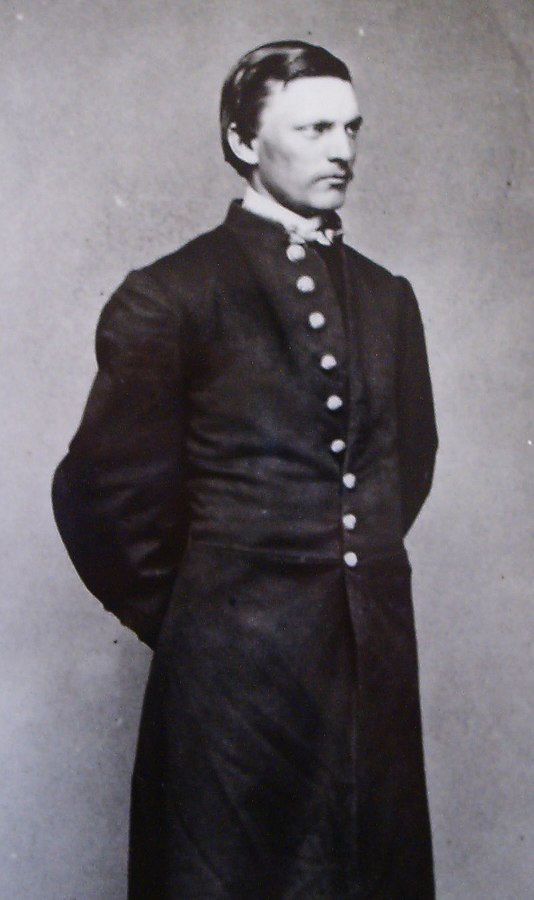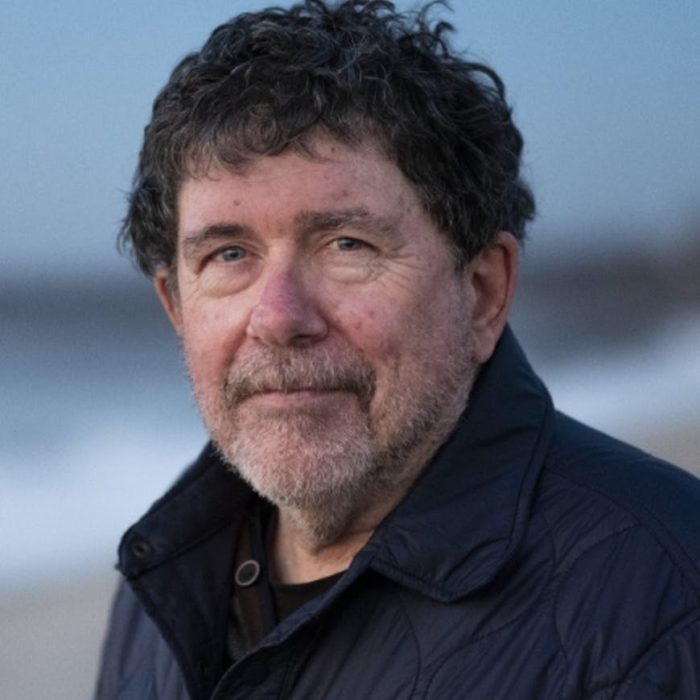by Tom Clavin
In January 1869, construction began on the Brooklyn Bridge. Obviously, work got underway in wintry conditions, but that was just the first of many challenges. That the bridge was built at all was remarkable, and credit goes not only to its architect, Washington Roebling, but to his wife—who wound up as the project’s construction manager.

This image is in the public domain via Wikicommons.
Roebling was born in 1837 in Saxonburg, Pennsylvania, a town co-founded by his father, John, and his uncle, Carl Roebling. After early schooling, Washington was sent to stay with Professor Lemuel Stephens of the Western University of Pennsylvania (now the University of Pittsburgh). He eventually attended the Trenton Academy and acquired higher education in engineering at the Rensselaer Polytechnic Institute in upstate New York.
Following his graduation as a civil engineer, Roebling joined his father to work as an architect and builder. From 1858 to 1860, he assisted his father on the Sixth Street Bridge project to replace an older structure over the Allegheny River. On April 16, 1861, soon after the start of the Civil War, Roebling enlisted as a private in the New Jersey Militia. Seeking more than garrison duty, he resigned after two months and re-enlisted in a New York artillery outfit, Company K, 83rd Volunteers. He performed staff duty engaged in the construction of suspension bridges to provide for the movement of troops. He rose steadily in ranks and was soon commissioned as a 2nd lieutenant.
Roebling saw action in numerous battles, including Second Bull Run, Antietam, Chancellorsville, and most notably, Gettysburg. Soon after Chancellorsville, he was perhaps the first to note the movement of Robert E. Lee’s Confederate Army toward the northwest while observing from a hot-air balloon. On July 2, 1863, during Gettysburg, Roebling was one of the first Union officers on Little Round Top. Seeing signs of approaching Confederate troops, he hurried down the hill to report to General Gouverneur Warren, for whom Roebling was aide-de-camp. General Warren and Roebling descended further to find troops to secure this important tactical position. Roebling helped haul artillery up the hill, while Warren sent two of his aides to search for infantry support. The two aides secured a brigade from the Union V Corps. The brigade immediately occupied the hill and defended the left flank of the Army of the Potomac against repeated Confederate attacks. By the end of 1864, Roebling was a lieutenant colonel after several promotions for gallant service.
Also during the war, he had made the acquaintance of the woman who would become his wife, Emily Warren, the sister of his commanding officer. He and Emily married in 1865. Roebling returned to his father’s business after the war, assisting with the construction of the Covington-Cincinnati Bridge (now the John A. Roebling Bridge) and others. While traveling in Europe to research construction products and techniques, his only son, John Roebling II, was born. After returning to the U.S. in 1868, Washington became assistant engineer on the Brooklyn Bridge project and was named chief engineer after his father’s death in mid-1869. He made several important improvements in the bridge design and further developed bridge-building techniques, including the design of the two large pneumatic caissons that became the foundations for the two towers.
Roebling forged ahead with work on the bridge in January 1870, beginning the important and dangerous task of sinking the pneumatic caissons at either end. Working in the caissons was difficult and dangerous—20 men were killed during the construction, and many others suffered from the decompression sickness, also called “the bends,” brought on by long hours in the caissons. As the construction progressed and the caissons sank deeper, the danger of this “caisson disease ” grew. To buoy morale, Roebling insisted on staying in the caissons longer than the other workers. He soon began to suffer caisson disease himself.

One day, he was brought back to the surface unconscious, and his life was saved only with great difficulty. Badly injured and fearing he wouldn’t live to see the bridge completed, he spent four months compiling elaborate, detailed instructions for finishing the work. In the process, he impaired his own eyesight and became too weak to carry on long conversations with his assistants. He could only watch the construction progress from a window of his sick room, and it was left to his wife to carry on the work, relaying his instructions to the workers and fending off skeptics who believed that the bridge couldn’t be completed without his active participation.
Fortunately, Emily Roebling, who had taught herself bridge construction, was up to the task. She took over most of the chief engineer’s duties including day-to-day supervision of the construction crews. Although the couple jointly planned the bridge’s continued construction, Emily successfully lobbied for formal retention of Washington as chief engineer. The writer David McCullough, in his 1983 book The Great Bridge, remarked that “nowhere in the history of great undertakings is there anything comparable” to Roebling conducting the largest and most difficult engineering project ever “in absentia.”
In 1883, 13 years after the project was begun, Washington Roebling was able to watch from his window as his wife accompanied President Chester Arthur, who formally opened the bridge. Sadly, he would battle the after-effects from the caisson disease and its treatment the rest of his surprisingly long life.
Following the Brooklyn project, Roebling and his wife lived in Troy, New York, from 1884 to 1888, as their only child also attended RPI. When John II graduated, the Roeblings moved to Trenton. Emily Roebling died in 1903 from stomach cancer. Washington Roebling remarried in 1908 to Cornelia Witsell Farrow of Charleston, South Carolina. He died in 1926 at age 89.
A few interesting tidbits:
1. His namesake and nephew, Washington Roebling II, was 31 when he went down with the RMS Titanic.
2. Roebling’s most passionate hobby was collecting rocks and minerals. His collection of over 16,000 specimens was donated by his son to the Smithsonian Institution and became an important part of its mineral and gem collection.
3. Many of Roebling’s manuscripts, photographs, and publications can be found in collections at RPI and Rutgers University. His family silver is on display in Ashford Castle in County Mayo, Ireland.
Originally published on Tom Clavin’s The Overlook.

Tom Clavin is a #1 New York Times bestselling author and has worked as a newspaper editor, magazine writer, TV and radio commentator, and a reporter for The New York Times. He has received awards from the Society of Professional Journalists, Marine Corps Heritage Foundation, and National Newspaper Association. His books include the bestselling Frontier Lawmen trilogy—Wild Bill, Dodge City, and Tombstone—and Blood and Treasure with Bob Drury. He lives in Sag Harbor, NY.

